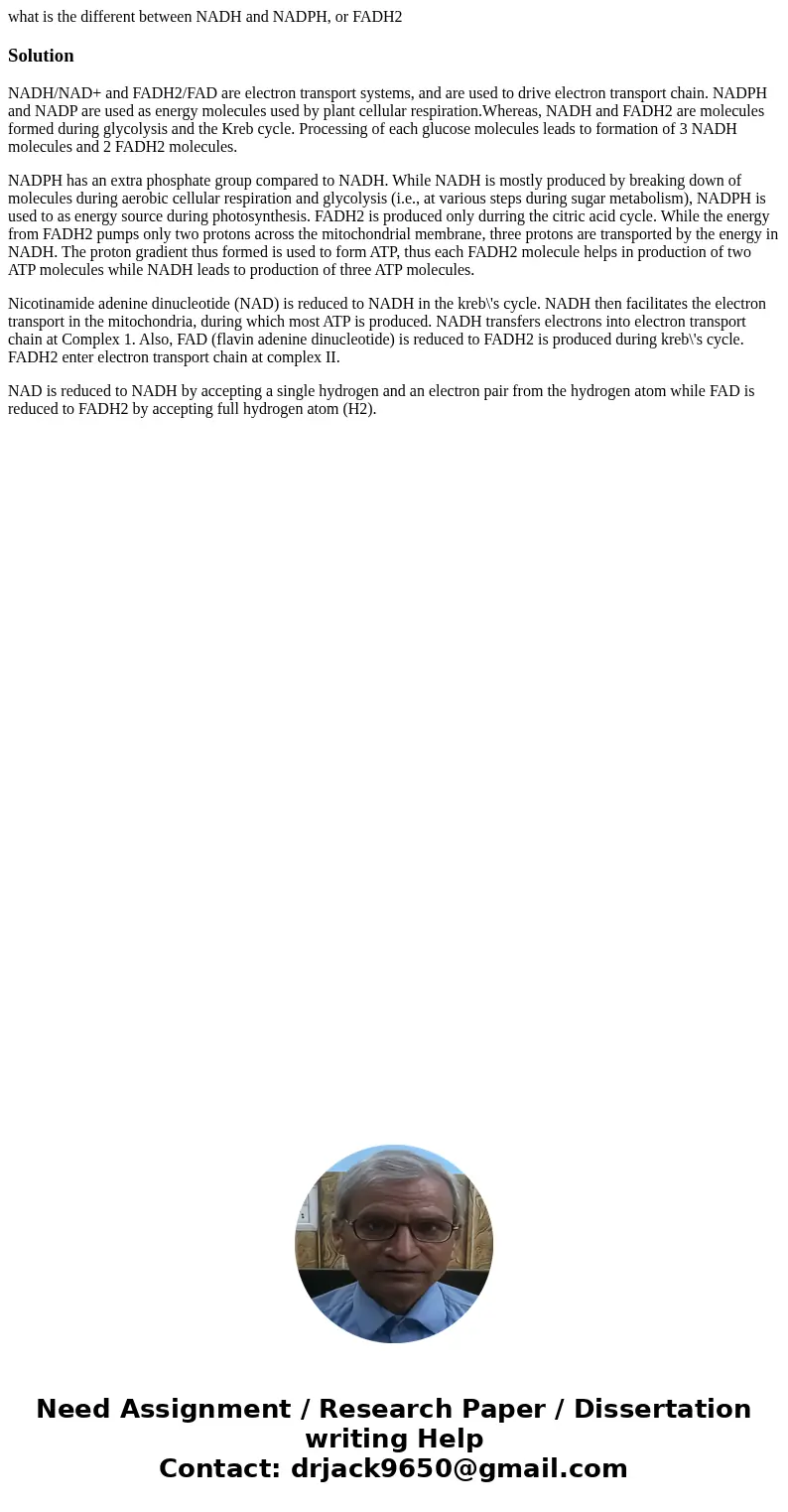what is the different between NADH and NADPH or FADH2Solutio
what is the different between NADH and NADPH, or FADH2
Solution
NADH/NAD+ and FADH2/FAD are electron transport systems, and are used to drive electron transport chain. NADPH and NADP are used as energy molecules used by plant cellular respiration.Whereas, NADH and FADH2 are molecules formed during glycolysis and the Kreb cycle. Processing of each glucose molecules leads to formation of 3 NADH molecules and 2 FADH2 molecules.
NADPH has an extra phosphate group compared to NADH. While NADH is mostly produced by breaking down of molecules during aerobic cellular respiration and glycolysis (i.e., at various steps during sugar metabolism), NADPH is used to as energy source during photosynthesis. FADH2 is produced only durring the citric acid cycle. While the energy from FADH2 pumps only two protons across the mitochondrial membrane, three protons are transported by the energy in NADH. The proton gradient thus formed is used to form ATP, thus each FADH2 molecule helps in production of two ATP molecules while NADH leads to production of three ATP molecules.
Nicotinamide adenine dinucleotide (NAD) is reduced to NADH in the kreb\'s cycle. NADH then facilitates the electron transport in the mitochondria, during which most ATP is produced. NADH transfers electrons into electron transport chain at Complex 1. Also, FAD (flavin adenine dinucleotide) is reduced to FADH2 is produced during kreb\'s cycle. FADH2 enter electron transport chain at complex II.
NAD is reduced to NADH by accepting a single hydrogen and an electron pair from the hydrogen atom while FAD is reduced to FADH2 by accepting full hydrogen atom (H2).

 Homework Sourse
Homework Sourse